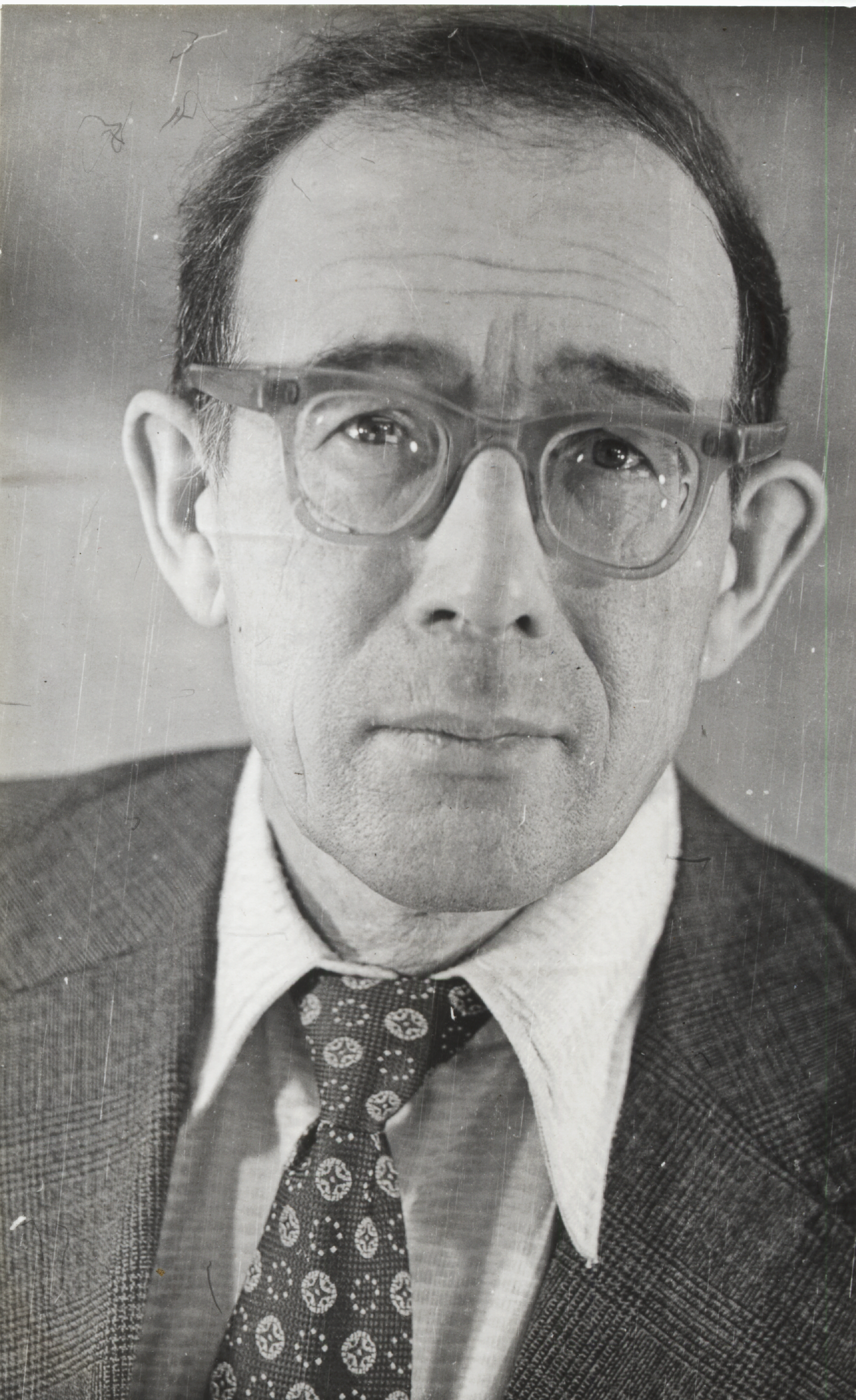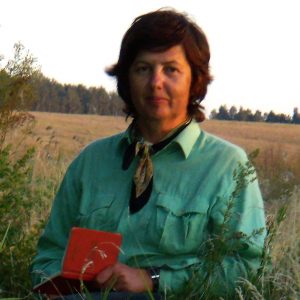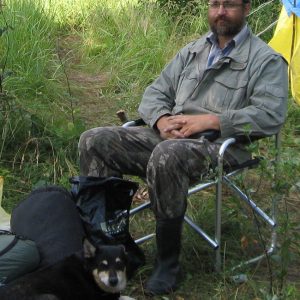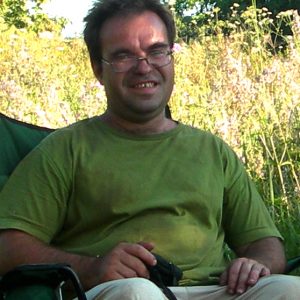Primeval Archaeology Department
Head of Department: Madina Shakirovna Galimova, Candidate of Historical Sciences
E-mail: mgalimova@yandex.ru
Address: 30, Butlerova str., rooms 33 and 34. Kazan, Republic of Tatarstan, Russian Federation, 420012
Department’s History:
The scientific foundation for the establishment and successful operation of the Primeval Archaeology Department was the activities of outstanding Kazan archaeologists who carried out large-scale studies of Stone Age, Early Metal and Early Iron monuments in the areas of Kuybyshev and Nizhnekamsk Reservoirs and in the territory of the Mari and Chuvash Republics in the second half of the 20th century. One of the originators of primeval archaeology was A. Kh. Khalikov, who created a fundamental work “Ancient History of the Middle Volga Region”, which he defended as a doctor’s thesis, in the late 1960s. The initiators of the study of different primeval periods of the Volga-Kama region were outstanding specialists who worked under the guidance of professor A. Kh. Khalikov in the Archaeology and Ethnography sector of the G. Ibragimov Institute of Language, Literature and History of the Kazan Branch of the USSR Academy of Sciences – Candidate of Historical Sciences M. G. Kosmenko (Final Paleolithic and Mesolithic), Candidate of Historical Sciences R. S. Gabyashev (Neolithic and Eneolithic), Candidate of Historical Sciences V. N. Markov (Late Bronze Age and Early Iron Age), Candidate of Historical Sciences P. N. Starostin (the Great Migration period and the Early Middle Ages).
The Department of Primeval Archaeology was established at the end of 2012 as a subdivision of the National Center for Archaeological Studies of the Sh. Marjani Institute of History of the Tatarstan Academy of Sciences. The starting point of the department’s activity is its first meeting held on December 18, 2012, at which the main directions of studies for the period from 2013 to 2015 were discussed and approved. The main staff of the department included senior researchers of the National Center of Archaeological Studies, Candidates of Historical Sciences M. Sh. Galimova (Head of Department), A. A. Chizhevsky and D. G. Bugrov. In 2013 the department was joined by Candidate of Historical Sciences L. A. Vyazov. Since 2014, the research activities of the department were joined by Research Associates Candidate of Historical Sciences A. V. Lyganov, geomorphologist A. A. Khisyametdinova and Senior Research Associate, Doctor of Historical Sciences M. A. Ochir-Goryaeva. In 2014-2016 scientific activity of the department was carried out by its Research Associate, Doctor of Historical Sciences V. S. Patrushev. Since 2016, the development of scientific topics of the department was joined by Candidate of Historical Sciences A.V. Shipilov. After completing a postgraduate course at Kazan Federal University, the development of the department’s topics was joined by Research Associate E. N. Golubeva since March of 2019. In 2020, the department was joined by Candidate of Historical Sciences R. R. Sattarov, and in 2021 – Candidate of Historical Sciences D. K. Tulush.
The scientific activity of the department in the period up to 2018 inclusive was carried out within the framework of the Priority Scientific Directions of the Institute and, first and foremost, Direction 1 “Continuity and Transformation of Archaeological Cultures of the Ural-Volga Region”. In this direction, the department’s scientists developed seven fundamental research topics covering all periods of the Primeval Period in the Middle Volga and Lower Kama Regions, and the Scythian-Sarmatian Period of the steppe zone of Eurasia. Also, the department’s research associated have since participated in activity management of regional creative groups aimed at creating the first volumes of the multi-volume academic publication “Archaeology of the Volga-Ural Region”.
In 2019-2021 the department’s researchers are involved in the development of scientific problems in the framework of two fundamental directions.
In Direction 1 “Investigation of the Continuity and Transformation of Archaeological Cultures of the Volga-Ural Region” in the Primeval Archaeology Department, the problem “Ecological Adaptation of Ancient Societies, Chronology and Dynamics of Cultural and Historical Processes in the Stone Age – Palaeometal and Iron Age of the Volga-Ural Region” is being developed, which includes five topics, namely:
Topic 1. “Reconstruction of Ecological Adaptation and Ancient Technology of the Population of the Middle Volga Region in the Stone Age and Early Metal Periods”;
Topic 2. “Chronology, Cultural Affiliation and Ecological Adaptation of the Societies of the Palaeometal Period of the Volga and Kama Regions”;
Topic 3. “Settlements of the Early Iron Age of the Volga-Kama Region: Palaeolandscape and Chronology (Interdisciplinary Archaeological and Paleogeographic Studies)”;
Topic 4. “Chronology and Dynamics of Cultural and Historical processes in the Middle Volga region and the Lower Kama Region in the Final Early Iron Age”;
Topic 5. “Fortification and Metallurgical Monuments of the Population of the Steppe Zone of Eurasia in the Early Turks Period”.
In the framework of direction 4 “Development of the Multi-Volume “Archaeology of the Volga-Ural Region”, the department carries out research work to complete the preparation of volumes 1, 2, 3, namely:
Volume 1 “Stone Age of the Volga-Ural Region”, Executive Editor – Head of Department M. Sh. Galimova;
Volume 2 “The Eneolithic and Bronze Age of the Volga-Ural Region”, Executive Editor – Senior Research Associate A. A. Chizhevsky, Secretary of the Editorial Board – Senior Research Associate A. V. Lyganov;
Volume 3 “Early Iron Age of the Volga-Ural Region” – Executive Editor – Senior Research Associate A. A. Chizhevsky, Secretary of the Editorial Board – Senior Research Associate A. V. Lyganov.
Department’s researchers carry out active field studies in the territory of Tatarstan and the neighboring republics and regions within the framework of the Primeval Archaeological Expedition. The Primeval Archaeological Expedition has operated since the early 1990s (initially within the framework of the National Center for Archaeological Studies of the Institute of History of the Academy of Sciences of the Republic of Tatarstan, and presently – the Institute of Archaeology named after A. Kh. Khalikov of the Tatarstan Academy of Sciences). The Expedition is annually formed from several groups headed by the department’s research associates. The main directions of the Expedition’s field studies are as follows: 1) comprehensive study of Primeval sites, settlements, barrows and burial grounds in the territory of the Volga-Kama Region and the neighboring regions in collaboration with soil scientists, palaeogeographers, archaeozoologists, geologists and representatives of other branches of natural sciences; 2) exploration and rescue excavations of Primeval monuments deteriorating in the negative impact areas of Kuybyshev and Nizhnekamsk Reservoirs.
Objectives (from the Department’s Regulation):
Activities of the Primeval Archaeology Department of the Institute of Archaeology named after A. Kh. Khalikov is to carry out fundamental and applied studies in the field of archaeology of the Stone, Bronze, Early Iron and Early Middle Ages of the Volga-Ural Region and the adjacent territories. The purpose of the research activities of the Primeval Archaeology Department is to expand and gain new knowledge on the ancient history of the Volga-Ural Region, to identify the processes of ecological adaptation, lifestyle and type of economy of the ancient population, ethnocultural, social processes, and the development of material and spiritual culture in chronological and spatial fields. The main study object is movable and immovable archaeological monuments (settlements, sites, fortified settlements, subsoil and barrow burials) and their collections dating back to the periods from the Stone Age to the early Middle Ages, located in the territory of the Republic of Tatarstan and the neighboring republics and regions of the Russian Federation.
Fields of Activity and Objectives (from the Regulation):
The Primeval Archaeology Department carries out scientific fundamental studies in the following thematic fields:
– Ecological adaptation and economic development of natural resources by the Primeval population of the Volga-Ural region, sustenance systems, economy and settling type, communication and transport systems, trade and economic relations;
– Chronology of antiquities from the Volga-Ural Region from the Stone Age to the Great Migration period, establishing the operation dates of archaeological monuments, identifying the chronological stages and periods of archaeological cultures, determining the regional chronological features;
– Ethnocultural and socioeconomic processes, allocation of regional culture-forming groups of the Primeval population of the Volga-Ural Region;
– Religious concepts and ritual practice based on materials from the burial complexes of the Volga-Ural Region.
The following tasks are performed by the Department’s employees as part of fundamental and applied research:
- 1. Priority development of fundamental studies using traditional archaeological methods, such as stratigraphic, typological, statistical, spatial analysis, as well as their combination with complex studies on an interdisciplinary basis using natural scientific methods of radiocarbon dating, archaeozoological identification, anthropological studies of remains, and landscape studies with the application of geoinformation (GIS) methods and geomorphological studies of archaeological sites.
- Organization and conduct of field archaeological studies at archaeological sites on research and development topics in the form of exploration, monitoring and excavation of monuments, including rescue activities.
- Publication of the main results of fundamental studies in the form of monographs, articles in periodicals and thematic publications, including those included in the lists of the Higher Attestation Commission, Russian Science Citation Index, Scopus, and others.
- Presentation of new discoveries and achievements at international and regional scientific forums in the form of reports, exhibitions, posters, visiting lectures in specialized scientific centers, including foreign venues.
- Implementation of joint research, scientific and educational projects with Russian and foreign scientific institutions and centers.
- Organization and conduct of field archaeological studies at archaeological sites on research and development topics in the form of exploration, monitoring and excavation of monuments, including security and rescue activities.
- Improvement of the qualification of research associates by their participation in internships in research centers according to their profile, as well as by means of doctoral studies, postgraduate studies, and aspiration.
- Teaching lecture courses on archaeology of the Volga-Ural Region in higher educational institutions, compilation of educational literature.
- Promotion of scientific achievements (regular updating of information on the Institute’s website, speeches and interviews by researchers, thematic publications in newspapers, on television and other media, preparation of popular science books, booklets and albums on the ancient history of the Volga-Ural Region and on the preservation and study of the archaeological heritage of the Republic of Tatarstan).
- Expansion of the material and technical resources through the acquisition of scientific equipment for field studies and office equipment, improvement of the financial framework for research and development by using extrabudgetary funds.
- Scientific consulting of the specialists of departments and centers under the Academy of Sciences of the Republic of Tatarstan and organizations under its scientific and methodological supervision.
- Development, analysis and evaluation of innovative plans for the Academy of Sciences and the Ministry of Culture of the Republic of Tatarstan, development of recommendations for their improvement.
- Organization and holding of meetings, seminars, conferences and other events at the Institute and the Academy of Sciences of the Republic of Tatarstan within the framework of the department’s research and development activities.
- Organization of exhibitions and presentations held at the Institute and the Academy of Sciences of the Republic of Tatarstan within the framework of the department’s research and development activities.
Figures and Main Achievements:
The results of interdisciplinary studies by the department’s specialists have been outlined in a number of publications in the “Russian Archaeology” and “The Volga River Region Archaeology” journals, in the proceedings of the All-Russian Archaeological Congresses, a number of All-Russian and international scientific conferences, in the annual issues of the “Archaeology of the Eurasian Steppes” journal dedicated to the study of the Primeval period, and monographs.
In the period from 2014 to 2020, the department’s specialists published 155 scientific articles, including 28 articles in SCOPUS journals, 51 – in Higher Attestation Commission journals, 56 – in Russian Science Citation Index scientific journals, and 11 publications in foreign scientific journals. In addition, the department’s specialists have completed and published five monographs in the framework of the planned research topics, namely:
- 1. A. Chizhevsky, E.M. Chernykh, A. A. Khisyametdinova, A.E. Mitryakov, E.A. Spiridonova, M.D. Kochanova, A.S. Aleshinskaya. Skornyakovskoye settlement on the Vyatka river. Series “Archaeology of the Eurasian Steppes”. Issue 22 – Kazan: “Kazanskaya nedvizhimost” Publ., 2016, Institute of Archaeology named after A. Kh. Khalikov, Academy of Sciences of the Republic of Tatarstan, 2016, 156 p., illustrated, inserts: pp. 19-20.
- M. A. Ochir-Goryaeva Ancient Necropolises of Ergeni Upland. Elista: Kalmyk Institute for Humanitarian Research, Russian Academy of Sciences; Institute of Archaeology named after A. Kh. Khalikov of the Tatarstan Academy of Sciences, 2017, 420 p. (22 a. s.).
- L. A. Vyazov, Yu. A. Semykin Novaya Bedenga settlement and ancient village: the Great Migration period in the Ulyanovsk Pre-Volga Region. Ulyanovsk: Research Institute of History and Culture of Ulyanovsk Region named after N.M. Karamzin; Institute of Archaeology named after A. Kh. Khalikov of the Tatarstan Academy of Sciences, 2016, 226 p. (10 a. s.).
- Galimova Madina Sh., Lyganov Anton V., Khisiametdinova Asia A., Golyeva Alexandra A., Bugrov Dmitry G., Askeyev Igor V., Shaymuratova (Galimova) Dilyara N., Askeyev Oleg V., Heino Matti T., Askeyev Arthur O., van der Valk Tom, Pečnerova Patrícia, Dalén Love, Aspi Jouni. The Pestretsy sites of the Eneolithic, Bronze and Early Iron Ages in the Lower Kama Region and their natural environment. Kazan, 2019, 20 a. s.
- Chizhevsky A. A., Khisiametdinova A. A. Defensive Structures of the Cusp Settlements of the Volga-Kama Region in the Early Iron Age and the Early Middle Ages. Kazan, 2020. 32.25 a. s.
Department’s specialists also participated in the compilation of museum catalogs, namely:
- D. G. Bugrov, Kh. M. Abdullin, V. S. Baranov, A.G. Sitdikov. Collective monograph: The Museum of Bolgar Civilization. Catalog (in 3 volumes). Kazan: “Glavdizain” Publ., 2016. (94.5 a. s.).
- Catalog. Axes of the Balanovo Culture in the Funds of the Archaeological Museum of Kazan State University [Electronic resource] / compiled by: A. V. Lyganov, A. R. Nuretdinova. Kazan: Kazan University Publ., 2018.– 88 p. Available at: https://kpfu.academia.edu/AlsuNuretdinova.
In 2020, the average citation index (Russian Science Citation Index) of department’s staff was 64 citations per specialist.
The Primeval Archaeological Expedition includes regular rescue and complex interdisciplinary studies of Stone, Early Metal, Early Iron and Early Middle Age monuments in the Volga-Kama region. In the field of security and rescue studies in the abrasion zones of the Kuybyshev and Nizhnekamsk reservoirs, department’s employees and graduate students, within the framework of the State Contracts with the Ministry of Culture of the Russian Federation in 2014, have completed rescue excavations of settlements, sites and burial grounds (including a barrow), as well as monitoring of deteriorating monuments in six districts of Tatarstan. In addition, the department’s researchers have participated in rescue studies at Kuybyshev Reservoir under the Program of the Republican Fund for the Revival of Historical and Cultural Monuments of the Republic of Tatarstan. In general, since the establishment of the department, the groups of the Primeval Archaeological Expedition have carried out comprehensive interdisciplinary and rescue studies of the following major Primeval monuments of the Middle Volga region: the Final Paleolithic sites – Beganchik and Sholma I; multilayer sites of the Stone Age – Dubovogrivskaya II and Kurmanakovskaya IV Early Metal sites, and Kominternovsky I barrow (with a Final Paleolithic site); complexes of Primeval monuments – Ust-Vikhlyansky, Gulyukovsky, Kamsko-Ustinsky (Lobach), Komarovsky sites; settlements of the Early Iron and Early Middle Ages – Skornyakovskoe, Maklasheevskoe II, Balymersky “Sholom”, and Makarievskoe. The Early Medieval Settlements of Bashanta I – II with the neighboring monuments located in the Lower Volga Region were studied on an annual basis.
Department’s researchers also participated in joint interregional expeditions: with the Kalmyk Scientific Center of the Russian Academy of Sciences (M. A. Ochir-Goryaeva), Chuvash State Research Institute of Humanities (M. Sh. Galimova, L. A. Vyazov, D. G. Bugrov), the Kostroma Archaeological Expedition under the auspices of the Russian Geographical Society (A. V. Shipilov), the Udmurt and Vyatka State Universities (A. A. Chizhevsky, E. I. Orudzhov), and the Research Institute of History and Culture of the Ulyanovsk Region named after N. M. Karamzin (L. A. Vyazov).
Following the results of studies by the groups of the Primeval Expedition, a number of articles and publications were published in the “Russian Archaeology”, “The Volga River Region Archaeology” and “Archaeology of the Eurasian Steppes” journals, in the proceedings of the All-Russian Archaeological Congresses, a number of All-Russian and International Scientific Conferences, and special scientific collections.
The study of the geological and geomorphological conditions of the location and formation of the cultural strata of Primeval sites, villages and settlements of the Volga-Kama Region carried out by A. A. Khisyametdinova, became a framework used by the department’s archaeologists A. A. Chizhevsky, M. Sh. Galimova, A. V. Lyganov and D. G. Bugrov to reconstruct the natural environment of the main cultural formations of the region.
The collective monograph (with international participation) “Pestretsy Sites of the Early Metal and Early Iron Periods in the Lower Kama Region and Their Natural Environment” with its author’s team including the department’s archaeologists M. Sh. Galimova (executive editor, co-author), A. V. Lyganov, D. G. Bugrov, and specialists in the field of paleogeography, paleobotany and soil science, archaeozoology and paleogenetics from leading research centers – the Institute of Geography of the Russian Academy of Sciences (Moscow), the Institute of Ecology and Subsoil Use of the Academy of Sciences of the Republic of Tatarstan (Kazan), and the Universities of Oulu (Finland), Uppsala (Sweden) , Copenhagen (Denmark), features the results of the study of archaeological and natural science materials obtained during the investigation of two major polycultural Primeval monuments on the right bank of the lower reaches of the Kama river – Pestretsy IV and II sites excavated by a group of the Primeval Archaeological Expedition. The results of activities by the interdisciplinary group of authors allowed to shed light on the cultural identity and lifestyle of the Primeval groups of Pestretsy sites, and reconstruct their natural environment during the Late Eneolithic, Late Bronze and Early Iron Ages.
- A. Chizhevsky and A. A. Khisyametdinova carried out long-term systematic studies of the defensive structures of the Volga-Kama cape settlements of the Early Iron Age and Early Middle Ages, which resulted in the publication of a monograph. The result of this activity was the reconstruction of the natural environment and the history of the emergence and development of the traditions of cape settlement construction in the form ion which they appeared at the beginning of the Early Iron Age and existed for almost two thousand years from the 9th century BC to the 7th-8th centuries AD. The authors carried out the first detailed review of the technologies used for the construction of defensive structures by the population of the Volga-Kama region in the period from the Early Iron Age to the end of the Great Migration period.
The department’s specialists actively participated in the 4th (20th) All-Russian Archaeological Congress in Kazan (October 2014). M. Sh. Galimova took part in the organization and supervision of the Initiative Section No. 19 “Natural Scientific Research and Paleogeographic Reconstructions in Archaeology”. The department’s specialists have made annual presentations at All-Russian, All-Russian (with International Participation) and International Scientific Conferences, including the ones held abroad (M. A. Ochir-Goryaeva, L. A. Vyazov, A. V. Shipilov, M. Sh. Galimova).
The rescue excavations of seven barrow groups carried out by M. A. Ochir-Goryaeva in the Republic of Kalmykia resulted in the publication of a monograph “Ancient Necropolises of Ergeni Upland”. Generalization of archaeological information obtained at the excavations of barrows of the Bronze Age, Early Iron Age and Middle Ages, with due account of the results of anthropological, paleozoological and palynological analysis, made it possible to reconstruct the features of material culture, lifestyle and ideology of the ancient population of the Lower Volga region, as well as its natural environment. M. A. Ochir-Goryaeva has summarized the information on material culture, landscape development strategies, social organization, anthropology and genetics of Eurasian nomads in the 6th-3rd centuries BC. Comprehensive studies at Bashanta I-II settlements and monuments in their vicinity, which she carries out on an annually basis, contribute to the improvement of interdisciplinary methods and approaches to the study of the Early Middle Age monuments and the reconstruction of the sustenance system of the population of the Lower Volga Region in this historical period.
- A. Vyazov, in collaboration with Yu. A. Semykin, published monograph as a result of studying the settlement and ancient village of Novaya Bedenga dating back to the Great Migration period located in the Ulyanovsk Volga Region. The book features an analysis of the main cultural and chronological complexes of the studied sites: the complex of the late 4th – early 6th centuries, associated with one of the sedentary population groups of the Hunnic period, and the complex of the 8th and 9th centuries, characterizing the ethnocultural composition of the population of the Ulyanovsk Volga region on the eve of the formation of Volga Bolgaria.
- V. Shipilov prepared for publication a monograph “The Eneolithic of the Ik-Belaya Interfluve (based on the Materials of Settlement Monuments)”.
- I. Orudzhov analyzes the material culture of the Ananyino culture of comb and cord ceramics of the Ananyino Cultural and Historical Area of the basins of the Vyatka and Vetluga rivers, and studies the defensive structures of Makaryevsky settlement of the Bronze Age, Early Iron Age and Middle Ages.
The department’s specialists under the supervision of A. P. Chizhevsky were the main co-organizers of regular All-Russian Conferences with International Participation “Ananyino World …” (2008, 2012, 2016, 2018) attended by experts from near and far abroad. M. Sh. Galimova participated in the organization of the educational process for students of the International Field School in Bolgar and co-headed the sections with international teachers and students “Experimental and Traceological Studies of Ancient Tools” (2015) and “Stone Tools: Technologies and Experiment” (2016). M. A. Ochir-Goryaeva organized a field seminar on the basis of an archaeological expedition to Bashanta settlement in the Republic of Kalmykia with the participation of specialists in the field of natural sciences from Germany, and collaborates with the Alexander von Humboldt Foundation and the University of Munich.
- A. Chizhevsky and M. Sh. Galimova, as the Executive Editors of the thematic issues of the “Archaeology of the Eurasian Steppes” journal, collaborate with a number of Russian and foreign authors in editing and preparing scientific articles for publication. A number of monographs and thematic scientific collections were published under the editorship of the department’s specialists. The department has held the discussion of the manuscripts of seven candidate theses and one doctoral thesis in Archaeology, which were subsequently defended. The department’s specialists participated as official opponents at Dissertation Councils in Kazan, Moscow and Novosibirsk.
Department’s Staff (in alphabetical order):
Dmitry Gennadievich Bugrov, Candidate of Historical Sciences – Senior Research Associate (worked at the department until 2019)
Leonid Aleksandrovich Vyazov, Candidate of Historical Sciences – Senior Research Associate (worked at the department until 2018)
Madina Shakirovna Galimova, Candidate of Historical Sciences – Head of Department
Eduard Igorevich Orudzhov – Research Associate
Maria Alexandrovna Ochir-Goryaeva, Doctor of Historical Sciences – Research Associate (worked at the department until 2020)
Valery Stepanovich Patrushev, Doctor of Historical Sciences – Research Associate (worked at the department until 2017)
Ruzil Railievich Sattarov, Ph.D. – Senior Research Associate (worked at the department in 2020)
Demir Konstantinovich Tulush, Candidate of Historical Sciences – Senior Research Associate
Asiya Abdulkadirovna Khisyametdinova – Research Associate (worked at the department until 2017)
Andrey Alekseevich Chizhevsky, Candidate of Historical Sciences – Senior Research Associate
Anton Valentinovich Shipilov, Candidate of Historical Sciences – Senior Research Associate









